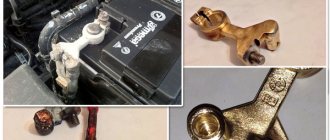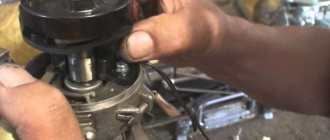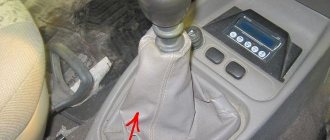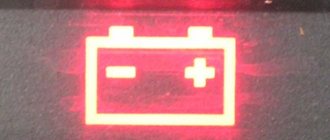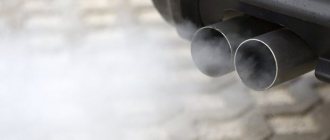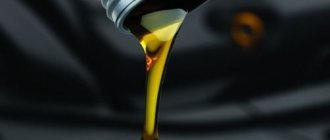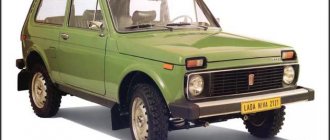A car's paintwork doesn't last forever. Unfortunately, even the highest quality layer of paint develops problems over time, begins to crack and sometimes cannot withstand the stress of washing a car. Many car owners begin to notice chips of paint appearing on the bumper after washing. The problem is that plastic is a flexible material, and most paintwork requires a rigid surface to function properly. Therefore, an unpleasant chip often forms on plastic bumpers. In the future, this chip will only grow. Its appearance indicates that it is time to repaint the bumper. Half measures are not suitable in this case for a number of reasons, which we will discuss below in the publication. It is worth noting that low-quality paint can chip already in the second month after applying the paintwork.
However, other factors also influence the integrity of the coating. For example, the professionalism of the person who did the painting. This is an important criterion for the quality of paintwork, which is often unavailable even at expensive service stations. The problem is that modern specialists do not always have sufficient experience to correctly apply all types of paint on the surface of a car. It is especially important to take these features into account when painting the bumper. Often the entire car is left unprotected simply due to the lack of quality processes when painting the car. There are many rules for working with plastic parts, and following these rules turns out to be the most important thing when performing painting work. Let's look at the causes of problems with chips on the bumper, as well as the possibilities of eliminating unpleasant consequences.
The main reasons for the appearance of chips on the bumper in a car
Plastic parts cannot be painted as well as metal body parts. When painting at a factory, there are a number of technologies that should be followed before applying the paint directly. If the paintwork was restored at private stations, problems cannot be avoided. Specialists will certainly not be able to perform all tasks exclusively the way they are done at the factory. Therefore, there are several main reasons for the appearance of chips on a plastic bumper:
- too much wear of the factory paint, the car is quite old, which causes big problems with body parts, including plastic ones;
- physical damage to the integrity of the paint due to stones, troubles during parking, minor accidents, and then the resulting chip grows at car washes and simply when driving;
- poor-quality painting is one of the main factors in paint chipping on plastic parts; the technology for applying materials to plastic is not followed;
- the chip appeared at the car wash due to the unprofessional actions of the employees, the washer pointed the gun at the bumper and then pressed the power button, the pressure knocked off a piece of paint;
- Deformations of the plastic appeared after prolonged exposure to the sun, the wavy surface caused cracking of the paintwork and the appearance of chips.
Such troubles can happen to any car. So you should use the best quality troubleshooting solutions. Many resort to the cheapest methods of repairing such unpleasant breakdowns, and often find themselves back with nothing. So you shouldn’t skimp on body repairs, otherwise you may end up with the same problems again just a few days after the important work is completed.
Removing spot chips by touching up
Such defects often appear on the front bumper from small stones. They knock off pieces of paint, causing conspicuous bare spots measuring 2-6 mm in size. There is a simple way to eliminate them, for which you will need:
- fine-grained sandpaper No. 1500 and 2000;
- degreaser and rags;
- thin stationery knife;
- primer, paint and varnish in small aerosol cans;
- thin wooden sticks with a pointed end (toothpicks will do);
- grinder and finishing polishing paste;
- glasses.
Chip repair kit
All stages of work, except polishing, can be performed outdoors at above-zero air temperatures. There is no need to remove the bumper; wash and dry it, then proceed to repair chips, following the following procedure:
- Using a utility knife, remove accumulated dirt and pieces of paint that are ready to break off from the recesses.
- Dip a toothpick in white spirit to remove dust from the chips.
- Sand a small area (up to 3 cm) around the defect with 1500 sandpaper moistened with degreaser. Then rinse the indentations again with a stick.
- Spray primer from a can onto a sheet of paper, and from there take it with a toothpick and carefully fill the inside of the chip.
- After the primer has dried, repeat the previous step, only using paint. When it dries, the chip needs to be cleaned again with sandpaper in a degreaser. The goal is to remove the coloring compound that has got on the old gloss.
- Apply the varnish with a stick. The result should be a speck that rises slightly above the surface.
- After 24 hours, sand the defect area with sandpaper No. 2000, generously moistened with water. This will remove any high spots from the hardened varnish and prepare the surface for polishing.
After wiping the area dry with a rag, polish it with a grinder with a fine abrasive paste, being careful not to cover a large area. Finally, apply polish with added wax to the bumper.
Photo instructions for repairing chips
How to professionally remove chips - video
Why shouldn't you touch up chipped paint on your bumper?
You can only touch up a chip if you know for sure that it is mechanical damage. Otherwise, such actions will not lead to a good result. The problem is that the appearance of chips is a problem with paintwork that needs to be solved efficiently and radically. If you simply touch up the problem area, you will not solve the problem in this way. But if the damage is mechanical, it is worth remembering the bumper touch-up technology:
- very small chips can be painted over with a match, a sponge or a small artistic brush; this is done quite simply, but often the quality suffers;
- if the chip is larger, you will have to use a sponge or other objects with a larger area of contact with the metal, this is an important point for every car;
- very large damages are limited with masking tape, cleaned and washed, then painting is done using a spray gun or a can;
- if there is direct damage to the bumper, they need to be eliminated; you can align the part using heat and physical influence with little force for alignment;
- If, after the damage, a hole or torn tear has formed, the repair should be entrusted to specialists, and it is best to simply buy a new bumper.
There is no point in painting over chips that appear without good reason. After some time, the paint will chip again and the result of such an action will not be the most pleasant sight. It is worth remembering that repairing body parts has its own characteristics and important features. And these features must be observed to obtain the desired result. Get important ideas for performing decent repairs on plastic body parts.
Polishing the bumper with a grinder
When the paintwork is completely covered with a network of small and deep scratches, only machine polishing will help remove them. The technology is also applicable in cases where there has been light contact with another car, causing abrasion to form on the body kit. It is better to carry out the procedure indoors so that during processing dust does not get into the defect area, acting as an abrasive. Reason two: it is not allowed to polish a surface heated by the sun.
To complete the work you will need:
- grinding machine with polishing wheels;
- sandpaper No. 2000 with fine grain;
- There are two types of polishing paste - starting and finishing, it is better to take the latter to match the color of the car;
- degreasing liquid (nefras, white spirit);
- tube - corrector with paint matched to the color of the car;
- rags, antistatic wipes;
- protective glasses.
Nefras is one of the best degreasers
Advice. Buying a grinder is an expensive pleasure; it is not advisable to purchase it for 1-2 treatments, unless you are going to do professional polishing. It's easier to rent equipment. As a last resort, you can use an electric drill with appropriate attachments.
After initial sanding, the scratches look like this:
Removing multiple deep scratches begins with removing the bumper and thoroughly washing and drying it. If there is foreign paint left on the surface from contact with another car, remove it with gasoline or white spirit. An important point: you can repair the bumper and remove traces of contact with another car only after you have fully documented the accident and recorded it with the insurance company, otherwise you may be left without payment.
Any scratches found are touched up using a tube with a mini brush.
Machine polishing is carried out according to the following algorithm:
- Stretch the sandpaper onto a flat piece of wood. Wet it with water and clean all scratched areas. Maintain even and gentle pressure, otherwise you will erase all the varnish to paint.
- Rinse the bumper with water, dry and degrease.
- Apply a coarse abrasive polish to the surface, give it a minute to harden and begin polishing, setting the wheel speed to within 2000 rpm. Periodically test the coating by touch to monitor its heating. The temperature should be what your hand can tolerate, no more.
- Wash the body kit again and examine the result after drying. If deep scratches are visible in the paint layer, degrease them and carefully apply the coloring composition from the corrector 2-3 times with breaks for drying (at least 10 minutes).
- Apply a coat of finishing polish and repeat the sanding procedure. You may have to do it several times for full effect. To ensure a uniform bumper finish, polish the entire surface.
- Wash and completely dry the body kit.
Applying polishing paste
Advice. During final polishing, do not try to cover more of the surface, but rather sand in sections so that the applied compound does not have time to harden.
Gloss is achieved by machine polishing
We recommend: DIY diesel engine turbine repair
Of course, specialists will perform such procedures better than you. But they will ask for a price of several thousand rubles (depending on the damage). It may not be possible to create a flawless appearance and completely remove all scratches, but overall the car will look much better, and the costs will be limited to the cost of materials. To secure the top layer of the coating, it does not hurt to apply a polish containing wax to it.
The result shows that not 100% of the defects were removed
How to prepare a bumper for full painting?
The best solution to this problem will be to fully paint the bumper using high-quality materials and technologies. If the chips appeared on their own, they may just appear again, so there is no point in painting over them. It is worthwhile to completely paint the bumper using fairly simple but effective technologies. Among the important actions, it is worth highlighting the stages of plastic preparation:
- it is best to remove the bumper from the car to avoid troubles when painting it, and then take the part to the garage, where this part of the car will be painted;
- the first stages of the preparation process can be performed on the street - this is washing off the old paint, removing the layer of old paintwork completely down to the black plastic of the body base;
- the next step will be matting the plastic if it has a glossy surface, often new bumpers are not matted before painting, and they soon show chips;
- then the surface of the part is degreased with a solvent and installed directly on the place where painting will take place in a garage or other room;
- after the solvent has dried, a layer of primer is applied, which may have several balls; this process must be carried out professionally and very carefully.
If the primer is not applied, the paint will not be able to adhere to the plastic. In this case, there will be problems with the integrity of the paintwork. However, these problems can be solved quite easily by first applying a primer before painting. The quality of the primer should be quite high, since this material protects the paintwork from destruction. Therefore, this process should be treated with an understanding of its importance.
Repairing surface cracks or scuffs on the bumper
When a car enthusiast, during the next superficial inspection of his car, discovers some scuffs on this element of his car, he has a reasonable question: if he has already scratched the bumper, what should he do? Even though the scratch is small, it can be very noticeable. The easiest way out is to go to the nearest car store and purchase a special wax pencil.
It is inexpensive, but will bring great benefits if the driver carries it with him. The process for getting rid of such a scratch will be as follows:
- To seal it completely and without visible signs that any work has been done, it is better to completely remove the bumper and place it on a hill.
- After this, thoroughly clean the damaged area, removing any remaining dirt and other deposits. To do this, it is best to take either a special substance for processing plastic, or use gasoline or white spirit. But since they can damage the paintwork of the car, you should take some precautions: drop a very small drop of it on a flannel or chintz cloth, very carefully, without applying significant effort, wipe the damaged area in a circular motion, and then be sure to remove all residues with a dry cloth. If you wait until everything dries on its own, marks may remain. White spirit and gasoline themselves do not interact with paint if used very carefully.
- Once everything is clean, you can start removing scratches. To do this, remove the cap from the wax pencil, slightly squeeze out the wax and cover the damaged area with transverse movements. This way the first layer is applied. After it has dried slightly, you need to apply a second layer, but with a vertical movement.
Gently apply a thin layer of wax to the damaged area.
Directly painting the bumper - important conditions and features
Already when performing painting work at the priming stage, a number of difficulties arise. Streaks of material, drops and dust do not give rest to the performer of the process. If you are painting a part in a residential garage, there is no guarantee that the process will be reasonably successful. Dust will still settle on the paint. However, drips and drips can be avoided. To do this, it is necessary to fulfill the following important conditions for painting work:
- paint should be selected based on quality, and not low price; it is better to choose a good material with a high cost that will not let you down in the future;
- painting is carried out in several layers - specialists apply up to six layers of material for more reliable coating service, as well as for the absence of chips;
- it is important to ensure a completely uniform execution of the painting job; the gun must be moved smoothly over the part at a distance of about 12-15 centimeters;
- after painting, you should leave the part in the prepared room for several hours, then check the quality of the paintwork; if necessary, some places can still be washed off with a solvent;
- The last stage will be to completely dry the paint within 24 hours and install the element in the same place; this will allow you to obtain the required quality of the part without any difficulties.
With such features, the bumper will always be in perfect appearance and will remind you of the important visual features of the car. However, there are types of plastic that are incredibly difficult to paint. A material that is too thin is overly elastic and causes paint to simply not adhere to it. Often such bumpers are covered with film or other colored materials to achieve success. We invite you to watch the bumper painting process in the following video:
Methods for removing scratches
There are many methods to correct the defect if you scratched the bumper. The most basic of them are aimed at masking damage to the top layer when the paintwork is not touched. These include polishing pastes with different sizes of abrasive, as well as wax products like pencils that fill cracks with a special substance.
Painting is a way to completely damage the production paint layer. When spot painting, it is enough to remove a layer of paint from one area, sand it well and then apply a new layer of a suitable color. If scratches are noticeable over the entire area of the part, the entire bumper must be repaired, with the old paint completely removed.
The deepest scratches without breaks require surface restoration, for which several layers of putty are used. Instructions for using all these methods are provided below.
Wax pencil
For those who have only slightly scratched the bumper, purchasing a wax pencil will be enough. Before using it, you must clean the bumper using special products, and then degrease it with a solvent.
It is best to use a wax marker at moderate temperatures in a warm, windless room. The wax is applied in several layers, and between approaches it is necessary to take breaks so that the layers have time to dry. Apply first with transverse movements, and then with longitudinal ones. It is advisable that the product does not fall outside the damaged area, and if this does happen, then you need to remove the wax using an ordinary napkin. After applying the last layer, the area to be treated should be lightly polished. In addition to filling scratches, such a pencil creates additional protection for the surface - but for this it is better to choose wax of increased hardness.
Before use, do not forget to shake the pencil slightly, and then close it with a cap so that the product does not dry out.
Coloring
Coloring is, of course, a much more detailed and complex process that requires special tools and materials. Any painting begins with cleaning the bumper, and it does not matter whether you are going to remove it or carry out all the work right on the spot. As in the previous case, the part must be washed, dried and degreased. To polish and remove the old coating, you will need a sanding machine, as well as sandpaper of varying degrees of grit.
- First you need to thoroughly machine the bumper around the entire perimeter; for hard-to-reach places you will need sandpaper, which we use by hand. Then a primer is applied to the surface in two layers, and the bumper is left to dry.
- When the composition has hardened, the bumper is cleaned again and then you can begin painting. In order for the color to adhere well, the part can be slightly heated beforehand.
- The paint is applied using a sprayer or a special gun. It will take about 3 layers, then the surface is varnished.
- For more complex damage, it is advisable to use putty along with the primer.
We recommend: Automatic transmission in a car: timely repair and service
Filling deep scratches
Using putty requires additional time and manipulation. It is applied after the bumper has been cleaned, degreased and sanded using sandpaper or a machine.
- The putty is applied in a small layer to the scratch so that it fills all the damage. Then you should sand the area. This must be done very carefully so that the surface does not become thin.
- When the first layer becomes smooth and even, you need to repeat the procedure, this time smoothing the surface at a slower speed. Remember to use fine-grit sandpaper for difficult areas, as no power tool can replace hand work.
- After the surface has acquired its previous shape, a primer is applied on top in two layers and all the above-described manipulations with paint and varnish are performed.
- Then it will take at least a day to dry and it will be better if the part dries naturally to prevent it from deforming.
Now you are not afraid of scratching your bumper, since in reality the repair is a fairly simple process that can be done without the intervention of a specialist. The most important thing is to strictly follow the instructions and correctly calculate your skills.
Let's sum it up
Painting plastic parts is not that easy. Local bumper repair turns out to be quite a complex process with a lot of unknowns. Therefore, in most situations it is better to trust full-fledged high-quality painting. Especially if the chips are large and did not appear from an accident. If the chip is caused by stones flying out from under the wheels of oncoming cars, you will have to do a high-quality painting of the chip itself and look at the behavior of this place. Often, owners immediately decide to repaint the entire bumper if we are talking about the unpleasant appearance of the product.
Local body repairs are always visible to the naked eye, and this really irritates many car owners. Therefore, motorists often prefer to completely repair the bumper. But keep in mind that ordering such a service from specialists can be expensive. It is also possible to repair the paint on the bumper yourself, but to do this you need to have a compressor, a paint gun and a place where you can apply the paint material. So it is not always economically profitable. Have you ever encountered unpleasant chips on your car bumper?
Types of scratches
In order to figure out how to remove scratches on a bumper with your own hands, you need to have an idea of what they are like.
Experts in the field of car repairs distinguish the following types:
- superficial, which form on the top layer of paintwork, this may be abrasion or a slight discoloration in this area;
- medium depth, which not only destroys the paintwork, but also slightly touches the plastic from which the bumper is made;
With such damage, not only the paintwork, but also the plastic suffers
- deep, which form dents and small cracks in a certain area of the car bumper.
Based on this, repairs will take place.
Features of metal bumper repair
Body kits made of metal are quite rare on modern cars. In terms of damage, they differ from plastic in that deep defects must be repaired as soon as possible. Otherwise, the metal will be affected by corrosion, which over time penetrates under the layer of paintwork, causing the latter to swell and begin to crumble.
Removing scratches from a metal bumper is done using the technology used for plastic body kits. Small shallow grooves are removed with a wax marker and polishing, and deeper cracks and chips are removed by touching up. But if the scratch has penetrated to the very base, then the processing technology is complemented by another operation - removing corrosion. It is done using a rust converter liquid, followed by cleaning the damaged area.
Note. Different compositions are used for priming metal and plastic surfaces; this must be taken into account when purchasing materials.
The deeper and more extensive the defect in the bumper coating, the more difficult it is to deal with it at home. Therefore, you should not get to work when a body element is covered with dents or requires complete painting. At the same time, one must understand that minor damage is not removed without leaving a trace, and the painted area, to one degree or another, stands out against the background of the old coating. Therefore, your task is to remove scratches and do it as efficiently as possible, so that the difference goes unnoticed during a quick inspection of the car.
